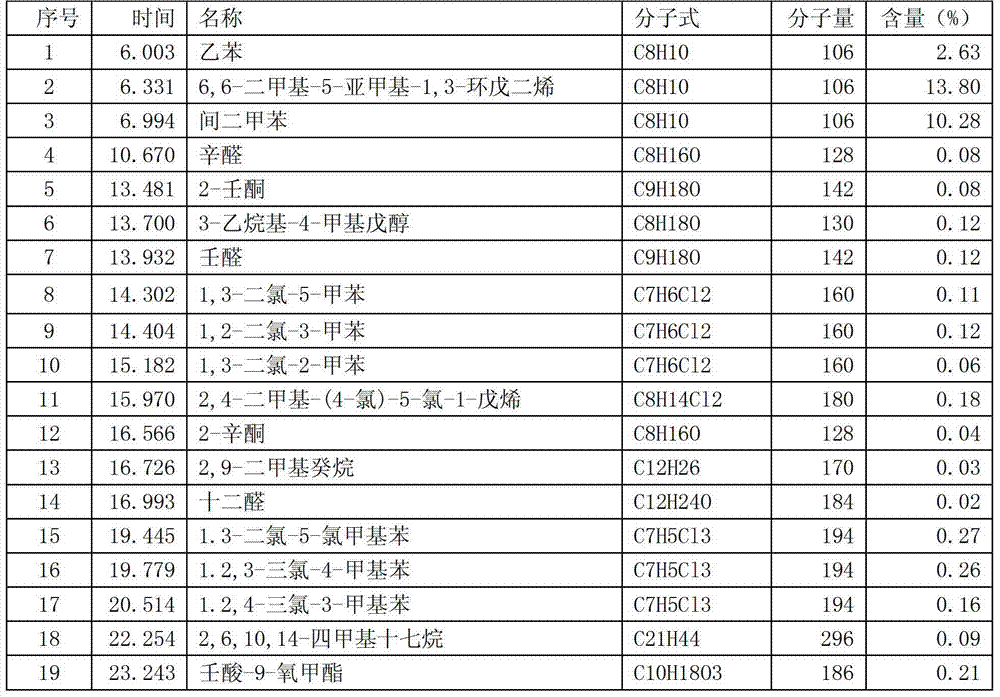Trichoderma spp. strain antagonizing maize stem rot and sheath blight and application thereof
A technology of corn stalk rot and Trichoderma, applied in the fields of application, fungicides, fungi, etc., can solve the problems of reduced corn yield and achieve the effect of fast growth and large spore production
- Summary
- Abstract
- Description
- Claims
- Application Information
AI Technical Summary
Problems solved by technology
Method used
Image
Examples
Embodiment 1
[0020] Embodiment 1 is an in vitro confrontation antibacterial test, embodiments 2 to 4 are enzyme activity detection tests of antagonizing related enzymes, embodiment 5 is a live inoculation antibacterial effect test, and embodiments 6 to 7 are extraction of antibiotic secondary metabolites Analysis test.
[0021] Embodiment 1, Antibacterial test in vitro
[0022] Prepare a PDA plate, use a puncher to punch out 5mm diameter bacterial blocks from the edge of the colonies of Trichoderma and 3 strains of pathogenic bacteria (Fusarium moniliforme, Fusarium graminearum, and Rhizoctonia solani) cultured for 3 days, respectively. Transplant in the center of the two opposite sides of the plate with a distance of about 5 cm, invert culture at a constant temperature of 28°C, and repeat 3 times. A plate inoculated with only pathogenic bacteria was used as a control. 144h after inoculation, the straight-line growth distance and S ck , calculate the inhibition rate according to the fo...
Embodiment 2
[0026] Embodiment 2, Chitinase enzyme activity assay
[0027] The Trichoderma strain was inoculated on a PDA medium plate (diameter 90 mm), and cultured in a light constant temperature and humidity incubator at 25°C and 60% humidity for 5 days. Soak the plate covered with Trichoderma in sterilized water for 3-5 minutes, gently scrape and wash the spores and mycelium with a cotton swab, filter with absorbent cotton or 4 layers of gauze to remove the mycelium, and the filtrate is the spore suspension. Count according to the hemocytometer method, and the concentration of the diluted spore suspension is 10 6 pcs mL -1 Spore count.
[0028] Prepare 1 mg mL of N-acetylglucosamine (NAG) (chromatographically pure, Sigma Chemical Co.P.O., Germany) -1Take 6 test tubes of 25×250mm, add reagents according to Table 2, mix each tube evenly, cook in boiling water for 5 minutes, cool to room temperature immediately after taking out, then add 21.5mL distilled water to each test tube, shak...
Embodiment 3
[0037] Example 3 , β-1,3-glucanase enzyme activity detection
[0038] Glucose standard curve was made with reference to Yang Yanhong’s method (Yang Yanhong. Screening of hyperparasites of Huashan pine rust pathogen and preliminary study on its mechanism of action. Kunming: Southwest Forestry University, 2004), adding reagents according to Table 4, and taking 1mg / mL standard Glucose solution 0, 0.1, 0.2, 0.3, 0.4, 0.5mL, then add distilled water to make up to 2mL, then add 0.75mL DNS solution and mix well, react in boiling water bath for 15min, take it out immediately and put it in ice water bath Cool to room temperature, add 5mL of distilled water and mix well. The light absorption value was measured at 540nm with a 722-type spectrophotometer, and the standard curve was drawn with the concentration of the standard glucose solution as the abscissa and the corresponding light absorption value as the ordinate.
[0039] Table 4 Reagents for Establishing Glucose Standard Curve ...
PUM
 Login to View More
Login to View More Abstract
Description
Claims
Application Information
 Login to View More
Login to View More - R&D
- Intellectual Property
- Life Sciences
- Materials
- Tech Scout
- Unparalleled Data Quality
- Higher Quality Content
- 60% Fewer Hallucinations
Browse by: Latest US Patents, China's latest patents, Technical Efficacy Thesaurus, Application Domain, Technology Topic, Popular Technical Reports.
© 2025 PatSnap. All rights reserved.Legal|Privacy policy|Modern Slavery Act Transparency Statement|Sitemap|About US| Contact US: help@patsnap.com



